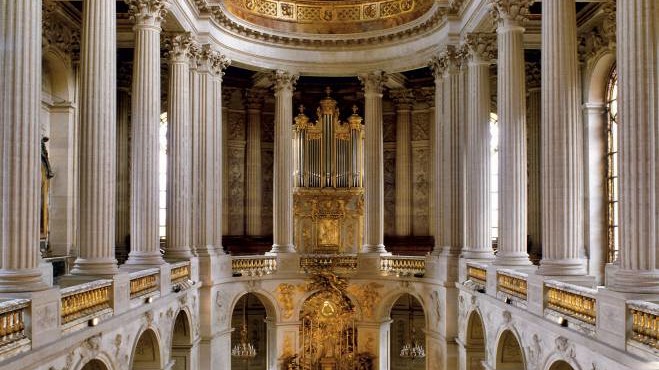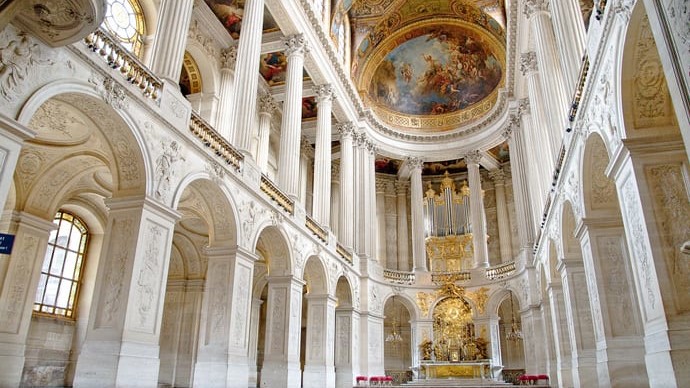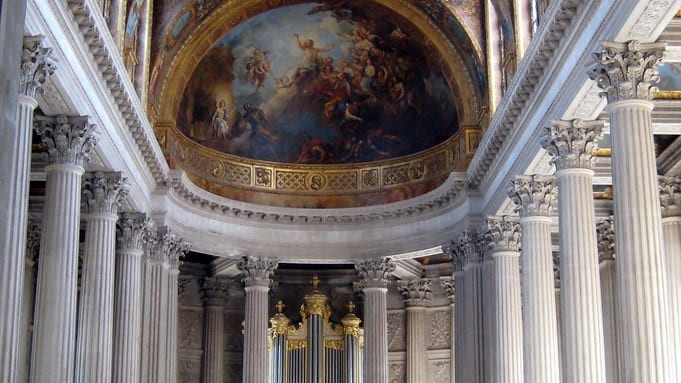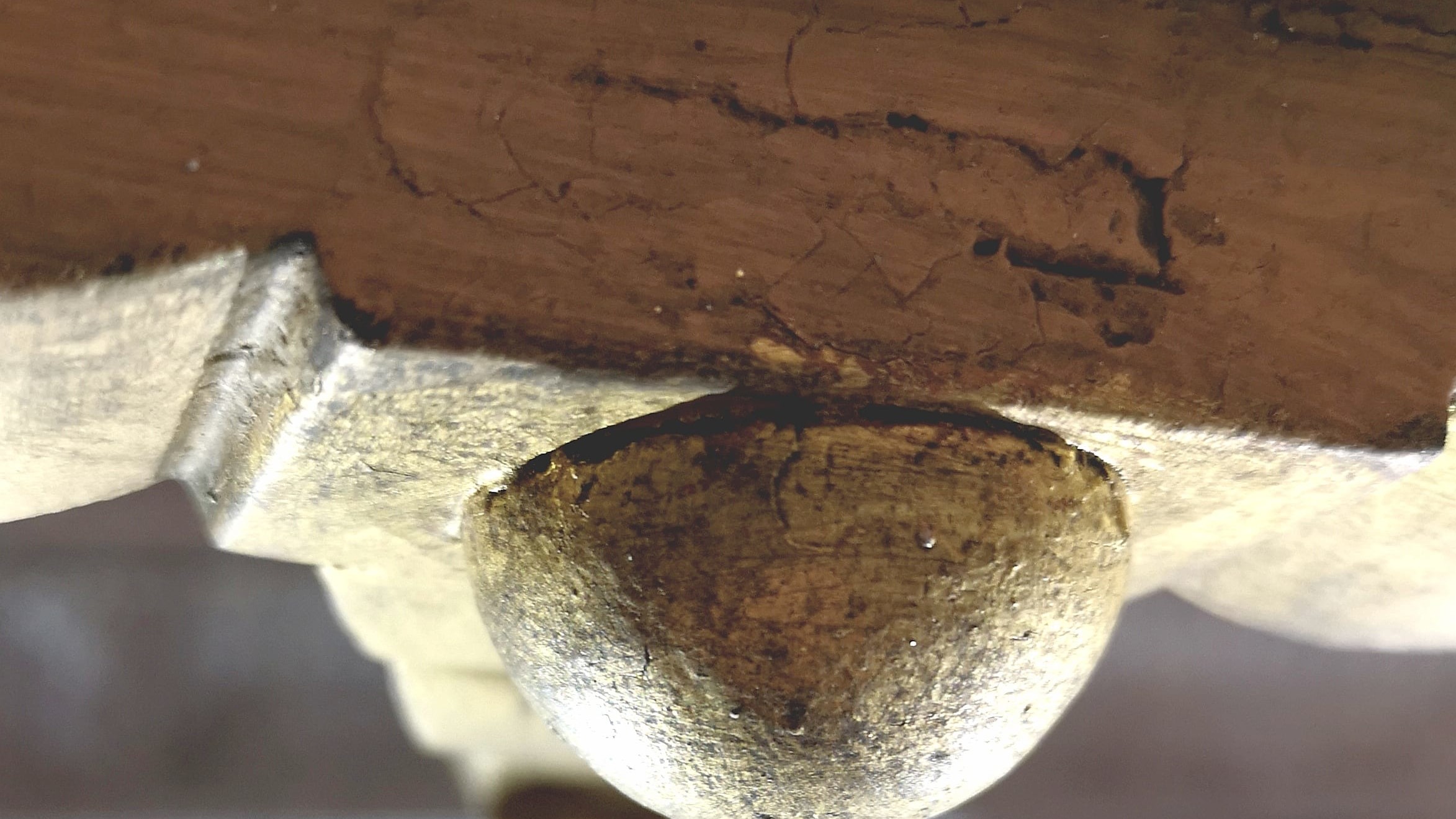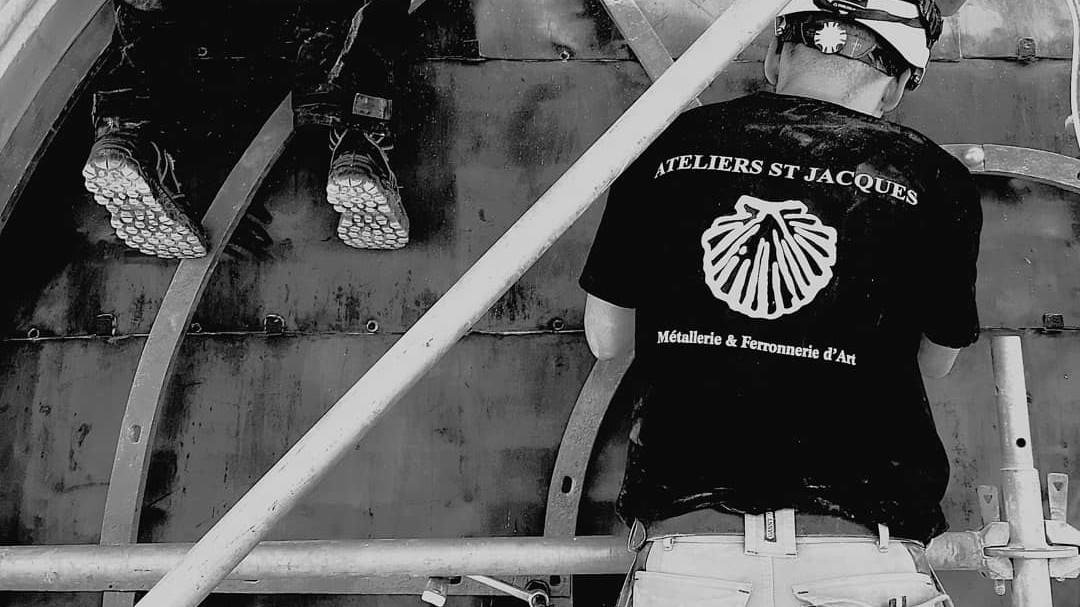The Royal Chapel of Versailles Castle is the last major building of Louis XIV for his Palace. It impresses with its elegance and elevation borrowed from Gothic architecture, the magnificence of its decoration and the incredible technical quality of its realization. Throughout the construction period, which lasted from 1687 to 1710, the architectural project matured slowly and found its final shape thanks to the architect Jules Hardouin-Mansart. Influenced by ultramontane architecture, the building is nevertheless part of the great French tradition of palatine chapels and appears as a manifesto of modernity.
In all respects, this building is one of the most striking in the whole field, one of the most accomplished and one of the least transformed. The Ateliers Saint Jacques have been in charge of the Chapel bays and wrought ironwork restoration for a year and a half.
These bays – about eleven meters high – are authentic masterpieces of the early eighteenth century French blacksmith. From a visionary design, incorporating modern systems still used today, they are the case supporting the stained glass windows that make the space so incredibly bright. Without the use of this ironwork technology, opening such bayes in clear lanes would have been impossible. Here, the art of the master glassmakers is sublimated by the talent of the masters iron-workers, thus conveying to Versailles a crown of light.
It is therefore with great respect and pride that the Ateliers Saint-Jacques dismantle, inventory, restore and reinstall the irons of these works. Rusty elements are cleaned, twisted irons are returned to their original shape and the missing pieces are reforged.
This project is a feat for the Ateliers Saint-Jacques metal workshops. It is the result of nearly six months of research, conducted by their design office in partnership with engineering teams and architects of historic monuments. During this pre-restoration stage, they inventoried each glass, dating and examining it, and inspected each screw or bolt. This is how they recounted nearly 300 years of successive restorations, some more successful than others, before deciding what direction to give to their own work. Because this new restoration is the most important since the construction of the bays: from the preparatory work to the final gilding, through the dismantling of the original stained glass windows or the restoration of worn out beadwork. The companions* work to give them back their original shape, inch by inch. They try to take into account all the issues related to the restoration of a monument of such importance. They work therefore with great rigor and extreme minutia. They are aware that by touching these works they touch the most valuable heritage of France, thus being inscribed in its History, its conservation, and its future.

